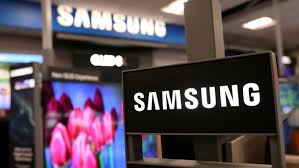In the midst of a global scarcity of chips used in phones, vehicles, and other electronic gadgets, Samsung announced plans to build a $17 billion semiconductor factory south of Austin, Texas.
In unveiling the project on Tuesday, Texas Governor Greg Abbott said, “This is the greatest foreign direct investment in the state of Texas ever.”
Samsung has stated that construction on the Texas factory will begin next year, with operations expected to commence in the second half of 2024. Samsung Vice Chairman Kinam Kim, standing with the Republican governor, said the company chose the location based on a number of criteria, including government incentives and the “readiness and stability” of local infrastructure.
The chip scarcity has become an economic stumbling block as well as a severe national-security problem for the United States. For more than a year, shortages of semiconductors caused by COVID-era shutdowns have impeded the production of new vehicles and electrical devices. Many American corporations rely on semiconductors made elsewhere, particularly in Taiwan, which China has long claimed as its own territory, raising new economic and national security concerns.
Being so reliant on Taiwan for much of the world’s chip production is a “concentration risk, a geopolitical risk,” according to Nina Turner, a research analyst at IDC. She believes the current shortages will subside, but that long-term demand for chips will continue to grow as more and more common products rely on them.
In response to the shortages, many chipmakers are spreading out their manufacturing operations, which have impacted industries ranging from automakers to video game developers.
“It makes sense for the supply chain to be a little more globally diverse,” CFRA analyst Angelo Zino said. “You can plainly see new foundry capacity plans being revealed in the United States and Europe.”
Another factor, according to Zino, is the expectation that Congress will approve federal subsidies for the semiconductor industry to build factories in the United States, in the hopes of creating jobs, alleviating future supply concerns, and giving the United States more leverage over economic rivals such as China.
Samsung had previously stated that it was looking into locations in Texas, Arizona, and New York for potential new chip production in the United States. Since the late 1990s, it has established a chip fabrication plant in Austin, Texas. However, the majority of its manufacturing facilities are located in Asia.
Samsung has stated that the Texas project will cost $17 billion, making it the company’s largest investment in the United States. The new facility will increase the production of high-tech semiconductors for 5G mobile communications, sophisticated computing, and artificial intelligence, as well as improve supply chain resilience, according to the company.
According to the Semiconductor Industry Association, the United States’ share of the global chip production market has dropped from 37% in 1990 to 12% now. The Biden administration has lobbied Congress to adopt the $52 billion CHIPS Act, which would boost computer chip manufacture and research. Separate legislation is also being considered that would establish a new tax credit for semiconductor manufacturing facility investment.
In his remarks on Tuesday, Samsung’s Kim waxed lyrical about Republican-led Texas, but he also praised collaborations with the Biden administration and congressional leaders from both parties. The project will benefit from “multi-tiered” incentives from the federal, state, and municipal levels, according to Abbott.
In a written statement hailing Samsung’s proposal, US Commerce Secretary Gina Raimondo said, “Increasing local manufacturing of semiconductor chips is important for our national and economic security.”
Several chipmakers have shown an interest in expanding their operations in the United States if the US government can make building chip facilities easier. Micron Technology, based in Boise, Idaho, announced plans to invest $150 billion over the next decade in developing its memory chip line, with a possible expansion of manufacturing in the United States if tax credits would assist offset the higher costs of American manufacture. Pat Gelsinger, the CEO of Intel, a California-based chipmaker, has encouraged the United States to concentrate its semiconductor subsidies on American firms.
Samsung is the global leader in memory chips, which are used in smartphones and other electronic devices, but Zino said the company is also extending its role on the “foundry side,” or the manufacture-for-hire of chips designed by other companies.
“My anticipation is that the Texas factory will be foundry-based in nature,” he said. “It’s in keeping with their plan to expand the capacity of their foundry.”
Similar efforts have been made in other nations to bring chip manufacturing closer to where they are utilized. The European Commission stated earlier this month that it might authorize aid to help subsidize semiconductor manufacture in the 27-nation union.
Officials in Williamson County have been working on a package of incentives for several months that would bring Samsung’s facility to a rural tract between the communities of Taylor and Hutto, employing around 1,800 people. It will create more than 2,000 employments, according to Abbott.
“It’s largely agricultural row crop and pasture now,” Russ Boles, the county commissioner whose precinct includes the property, said. “The location they are considering has excellent infrastructure. It has a lot of electricity, a lot of water, and a good road infrastructure. Those nitty-gritty details are crucial to Samsung and the project.”
On Nov. 15, the Taylor school board approved an agreement that would allow Samsung to save money on taxes if it established a facility within the school district’s boundaries. Government officials in Williamson County, where Taylor is located, had previously approved tax incentives and infrastructural improvements. It’s about a 40-minute drive northeast of Austin to get to the site.

















